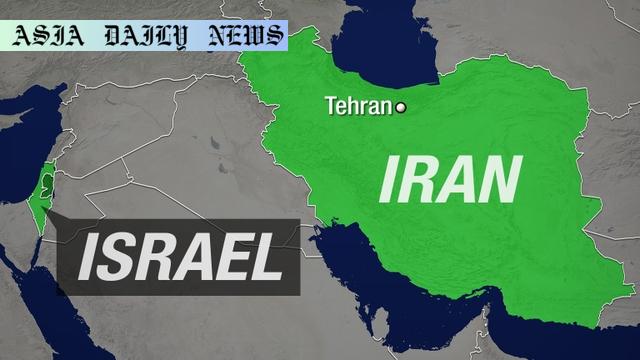Iranian nuclear sites, US President Donald Trump stated on social media that the US has launched strikes on three nuclear facilities in Iran.
- The US, under President Trump’s directive, carried out strikes on three nuclear sites in Iran.
- Details of the attacks remain scarce, but they mark a significant escalation in US-Iran tensions.
- The move has received mixed global reactions, with some calling for diplomatic solutions.

Introduction to the Strikes
In a move that has captured global attention, US President Donald Trump announced on social media that the United States conducted strikes on three Iranian nuclear facilities. While exact details of the operation remain under wraps, this development signifies a major escalation in the ongoing tensions between the US and Iran. Many geopolitical analysts are viewing this step as a bold and potentially high-risk move in a volatile region.
Background on US-Iran Relations
The relationship between the United States and Iran has been fraught with conflict and mistrust for decades, dating back to the Iranian Revolution and the subsequent hostage crisis in 1979. In recent years, the situation has further deteriorated following the US withdrawal from the Joint Comprehensive Plan of Action (JCPOA) in 2018, commonly known as the Iran nuclear deal. President Trump has consistently criticized the agreement, arguing that it enabled Iran to continue its nuclear ambitions without sufficient oversight. As a result, his administration imposed a series of crippling sanctions aimed at weakening Iran’s economy and curtailing its nuclear program.
Analysis of the Strikes
The decision to bomb Iranian nuclear sites is being interpreted as a clear message of deterrence. The three targets reportedly included facilities suspected of advancing nuclear weapon capabilities, though their exact locations and significance remain classified. The strikes are likely to have far-reaching implications not just for US-Iran relations, but also for regional stability in the Middle East. Iran’s consistent defiance of international restrictions on its nuclear program had alarmed the US and its allies, leading to this direct action. However, questions remain about whether this move will effectively curb Iran’s nuclear advancements or trigger retaliatory measures.
Global Reactions
Reactions to the strikes have been mixed. Supporters of the move within the US argue that it is a decisive response to a potentially severe threat posed by Iran’s nuclear program. On the other hand, critics have expressed concern about the escalation of tensions and the possibility of conflict spiraling out of control. Leaders of European nations, many of whom were involved in the 2015 nuclear deal, have called for restraint and dialogue. Meanwhile, Iran has vowed to respond to what it considers an act of aggression, further raising concerns about the risk of military escalation.
Potential Consequences
While the immediate effects of the strikes are unclear, the long-term ramifications could be profound. One potential consequence is heightened instability in the Middle East, a region already plagued by numerous conflicts and crises. Additionally, diplomatic efforts to resolve the Iranian nuclear issue may be further complicated, as trust between the involved parties erodes. Meanwhile, the global economy, particularly oil markets, could be affected by the increased risk of conflict in the region.
Conclusion
The US strikes on Iranian nuclear sites represent a significant development in international relations. While the intent may have been to deter Iran’s nuclear ambitions, the operation has introduced new uncertainties and risks. As the world watches closely, the coming days and weeks will likely determine the full impact of this decision on global politics and security.



Commentary
A Bold Yet Risky Decision
The US strikes on Iranian nuclear sites under President Trump’s directive mark a bold, but undoubtedly risky, move in the realm of international politics. Iran has long been a focal point of concern for its nuclear aspirations, and by taking such a direct action, the United States seems to be drawing a definitive line. However, questions arise not only about the timing of this decision but also about its long-term ramifications. Are such measures truly effective in curbing nuclear ambitions, or do they risk stoking the flames of an already volatile situation? Only time will tell.
Balancing Strength with Diplomacy
One cannot deny the importance of maintaining global security and preventing the proliferation of nuclear weapons. Yet, actions like these often raise the age-old question: should military might take precedence over diplomatic engagement? The two need not be mutually exclusive. History has shown that open channels of communication, even between adversaries, can achieve what might otherwise seem unattainable. In the absence of dialogue, however, such military actions risk alienating not just adversary states but also those who seek a multilateral approach to conflict resolution.
The Human and Global Cost
Finally, it is essential to consider the human and global cost of escalating tensions. Beyond the political rhetoric, real lives are affected by these decisions, both in Iran and globally. Escalation may destabilize the region further, exacerbating humanitarian crises and affecting neighboring countries. Meanwhile, global economies—particularly oil-dependent industries—are sensitive to any unrest in the Middle East. Policymakers must weigh these considerations carefully to avoid creating more harm than good.
Final Thoughts
While the US strikes on Iranian nuclear sites may provide a short-term sense of accomplishment, they have raised more questions than answers. In a world striving for peace and stability, one hopes that leaders will prioritize dialogue, mutual understanding, and constructive engagement over actions that may lead to unintended consequences. The world is watching, and history will surely scrutinize this moment for its impact on international relations.